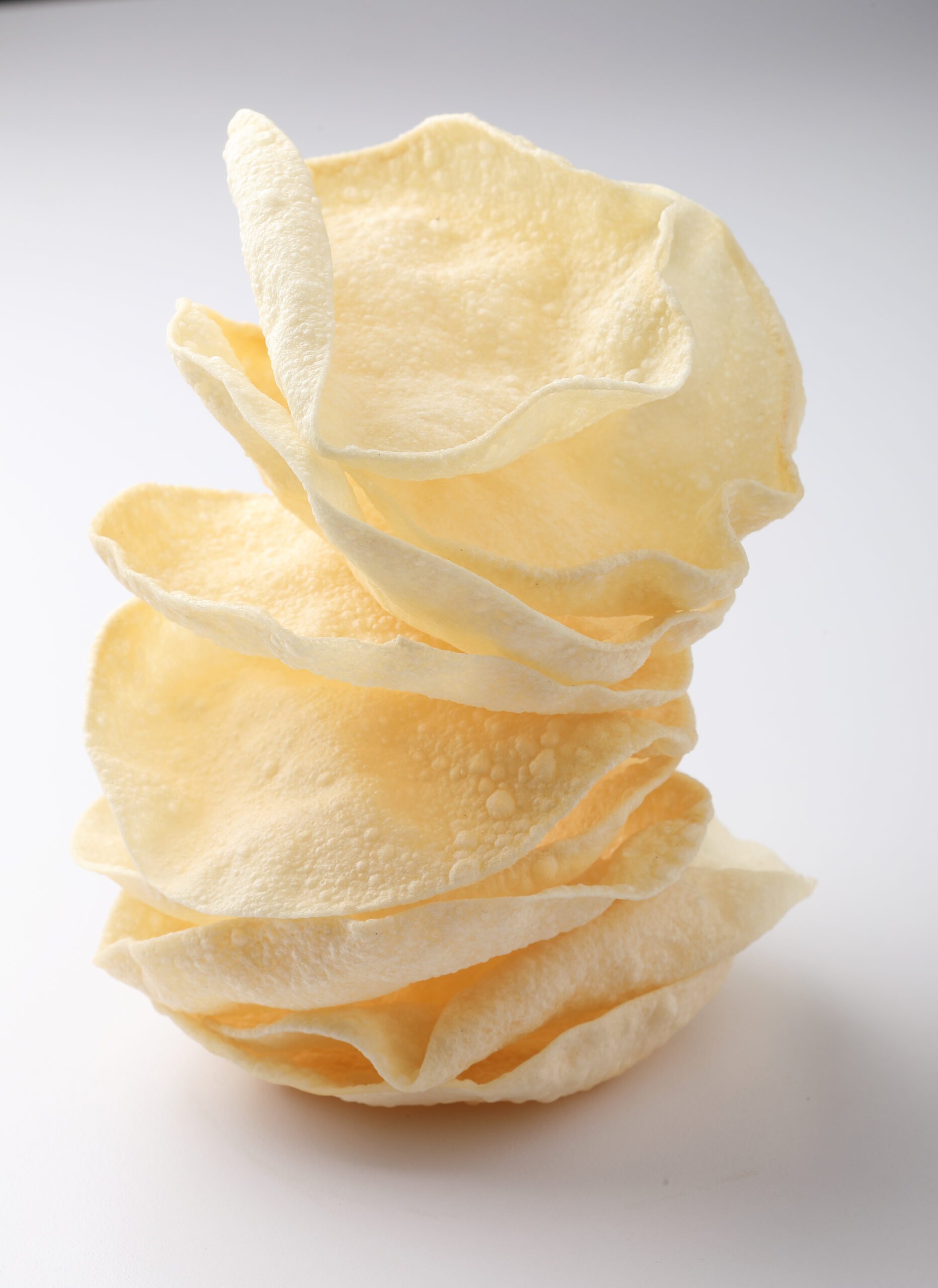
You hear the crack before you taste it. That ultra-thin, ultra-crispy snap that feels light as air yet somehow manages to pack bold flavor.
Known as papad - or poppadom outside South Asia - this delicate crisp has been part of Indian dining for generations. But its appeal stretches far beyond tradition. Papad works as a quick snack, a crunchy side, a light bite between meals, or even as a clever twist in modern recipes.
Here’s a closer look at what makes papad special, how it’s made, and the many forms you’ll find it in.
What Exactly Is Papad
Papad, often called poppadom outside South Asia, is a paper-thin, disc-shaped crisp made from seasoned flour—commonly lentil, chickpea, or rice. Rolled out until almost translucent, it’s dried and stored, waiting to be transformed into a crunchy snack with just a bit of heat.
Simple as it seems, papad has a bold personality. Light yet punchy, it’s often flavored with black pepper, cumin, or chili flakes. Roasted, fried, or even microwaved, it delivers that airy crackle that instantly perks up a meal.
Far from just a side item, papad has range. It slips easily into traditional thalis, quick snacks, or even modern fusion plates where its crisp texture shines.
Quick Facts About Papad
- What it is: Thin, crisp wafer made from lentil, chickpea, or rice flour, often spiced
- Flavor: Savory, lightly spiced, sometimes peppery or garlicky depending on variety
- Best in: Served as a crunchy side with Indian meals, as a snack, or topped with chutneys and salads
- Varieties: Made from urad dal, moong dal, chickpea flour, or rice flour; sun-dried and fried or roasted
- Storage: Keep uncooked papads in an airtight container in a cool, dry place; cooked ones should be eaten fresh
How Papad Is Made
Papad-making blends everyday ingredients with careful technique. A flour base—usually urad dal, chickpea, or rice—is mixed with salt, spices, and a splash of water to form a smooth, pliable dough.
The dough is rolled into small balls and flattened into ultra-thin discs. The thinner the disc, the lighter the crunch—something that takes skill to perfect.
Each piece is then dried in the sun until crisp, a process that can take a full day or more depending on the weather. Once dried, the papads keep well and are ready for roasting or frying whenever needed.
Regional twists might include sesame, green chili, or extra cumin, but the essence is the same everywhere: dry it, store it, crisp it when the craving strikes.
Forms You’ll Find It In
Papad isn’t one-size-fits-all—it shows up in plenty of shapes, sizes, and creative formats:
- Classic round discs: The standard form, sold dry and uncooked, ready for roasting or frying.
- Mini papads: Bite-sized rounds that work well for snacks, canapés, or party plates.
- Spiced varieties: Mixed with chili flakes, pepper, cumin seeds, or garlic for extra flavor.
- Papad rolls or stuffed versions: Less common, but popular in some regions as a heartier snack.
- Ready-to-eat papad chips: Pre-cooked and packaged like crisps, often sold in global food aisles.
- Creative modern uses: Crushed as a salad or curry topping, shaped into edible bowls, or used like crackers for dips and spreads.
No matter the form, papad always brings crunch, spice, and a touch of surprise—proof that something so simple can adapt to almost any table.
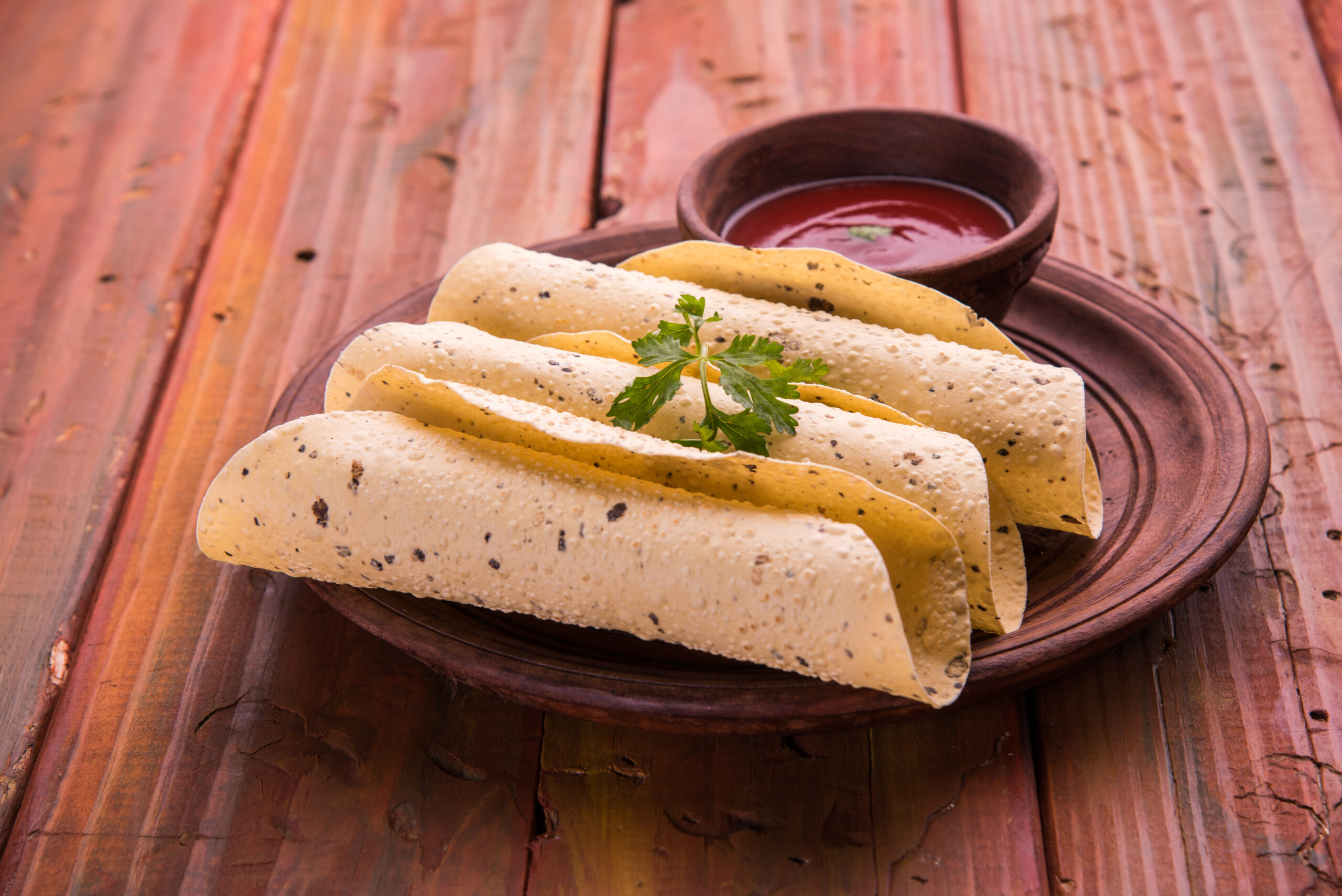
Crispy, smoky, and full of character — roasted roll papad adds crunch with a twist.
What Papad Tastes Like
Papad has a flavor that starts off subtle, then surprises you as it builds. The base is savory and earthy from lentil or chickpea flour, but it’s the spices that give it character.
Depending on the type, you might catch:
-
A sharp kick from black pepper or red chili
-
Nutty depth from cumin or carom seeds
-
A funky edge from asafoetida (hing)
-
A light tang when dried with salt and lemon juice
Texture plays a big role too. Thin and brittle, papad snaps cleanly, delivering the spices straight to your palate with no buffer. Roasted versions taste light and a little smoky, while fried papads turn rich, salty, and indulgent. Even plain ones carry enough seasoning to stand on their own.
More Than a Side: Ways to Enjoy Papad
Papad may be known as a mealtime side, but its crunch and spice make it far more versatile. It can slip into snacks, starters, and even creative fusions without missing a beat.
A few ideas:
- Topped like a cracker: Pile on onions, tomatoes, green chili, and lemon juice for masala papad.
- Paired with global dips: Works with hummus, guacamole, sour cream, or cheese spreads.
- Crushed as a topping: Sprinkle over soups, salads, or yogurt bowls for a salty crunch.
- Shaped as a shell: Fold hot papads into taco shapes for quick edible wraps.
- Layered in fusion dishes: Find it in chaats, canapés, or snacks with sweet-and-spicy fillings.
Roasted, fried, microwaved, or grilled—papad adapts easily. It may start as a side, but it has all the makings of a star.
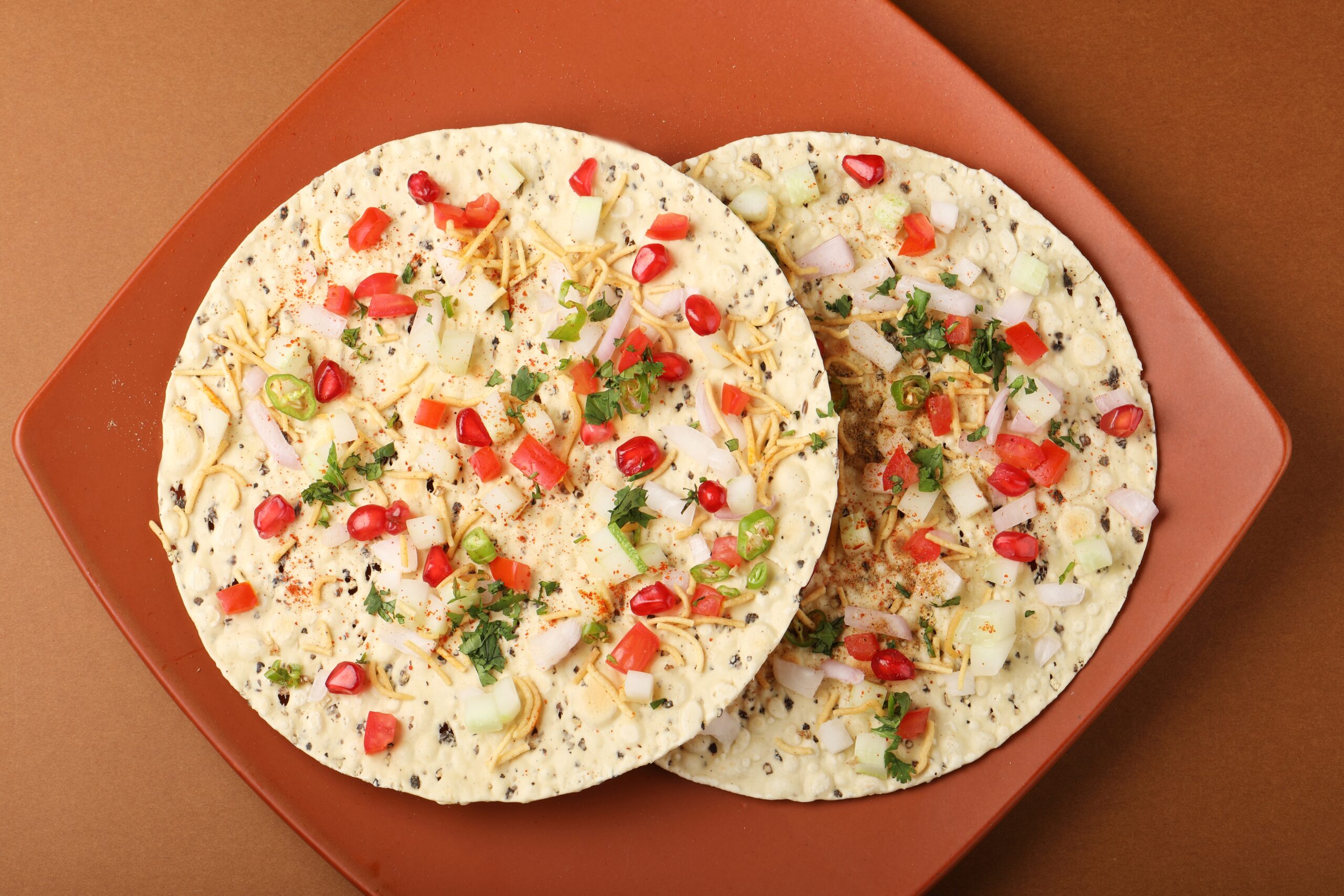
Masala papad topped with fresh onions, tomatoes, and spice — a crunchy burst of flavor in every bite.
Papad Around the World: Beyond Its Indian Roots
Papad may be deeply rooted in South Asian cooking, but it has quietly made its way onto plates worldwide. Here’s where you’ll spot it today:
United Kingdom
Often called poppadoms, they’re a restaurant staple—served before the meal with chutneys like mango or mint yogurt.
Global fusion kitchens
Chefs have turned papad into a canvas for modern starters. Think avocado or salsa on top, seafood canapés, or crisp taco shells made from roasted papads.
Vegan and gluten-free circles
Papad is being embraced as a light, allergen-friendly snack. Naturally plant-based and easy to cook with minimal oil, it fits well into modern diets.
Food bloggers and influencers
Across the US, UK, and Australia, papad is showing up in reels, snack boards, and creative fusion recipes, giving it a new digital stage.
Modern Indian restaurants
Upscale menus use papad as more than a side—garnished with flavored salts, herbs, or paired with dips like whipped feta or beetroot chutney.
From roadside stalls to fine dining, papad keeps evolving while holding onto the crunch and spice that make it unique.
Storing It Right
-
Keep it dry: Store uncooked papads in airtight containers, away from heat and humidity. Even slight moisture makes them bendy or stale.
-
Skip plastic bags: They trap moisture. Glass jars or metal tins work best.
-
Store separately: Papad absorbs odors quickly, so keep it away from pungent spices or fried foods.
Handled well, papad stays crisp for months—ready to crackle to life when you’re in the mood for something light and crunchy.
Is It Healthy?
Papad may look like just a crispy side, but there are a few interesting health angles — especially when it’s roasted instead of fried.
-
Made from lentil or chickpea flour, it can offer a small boost of protein and fiber (Source).
-
Spices like asafoetida, black pepper, and cumin may support digestion and reduce bloating (Sources 1, 2).
-
It can be a light snack when roasted, with very little fat involved.
But there’s a flip side too:
-
Some packaged papads can be high in salt and preservatives, especially the flavored or fried ones.
-
Deep-frying turns it into more of a treat than a healthy bite.
In moderation, and when prepared smartly, papad can fit into a balanced diet. Just don’t let that crunch fool you into eating the whole stack.
Final Thoughts
Papad may be paper-thin, but it carries layers of flavor, tradition, and creativity. Serve it the classic way with dal and chutney, or take it global with dips and modern toppings—it adapts to almost anything.
What makes papad special is its contrast: light yet bold, simple yet versatile. Keep a stack in your kitchen, experiment with how you cook and serve it, and let that signature crunch add character to your meals.
Sometimes, the lightest bite makes the biggest impact.
FAQs
What is papad made from?
It’s usually made with lentil, chickpea, or rice flour mixed with spices, then rolled thin, sun-dried, and stored until ready to cook.
Is papad gluten-free?
Most are naturally gluten-free, especially those made with lentils or chickpeas. Just check labels, as some brands may add wheat flour.
Can papad be roasted instead of fried?
Yes. Roasting over an open flame or in the oven gives it a light, smoky crunch without oil.
Is papad healthy to eat often?
Roasted papad is a lighter option, while fried versions can be salty and oily. Like most snacks, it’s best enjoyed in moderation.
How should I store papad?
Keep uncooked papads in an airtight container, away from moisture and heat. Proper storage keeps them crisp and ready to puff up perfectly when cooked.


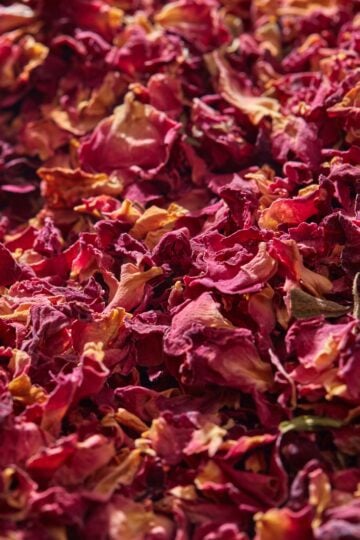
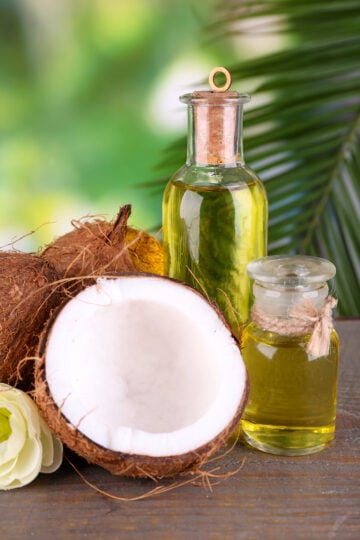
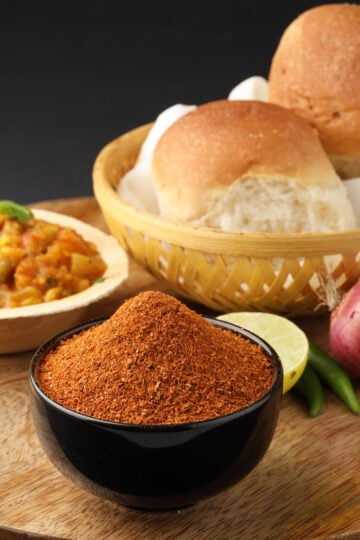
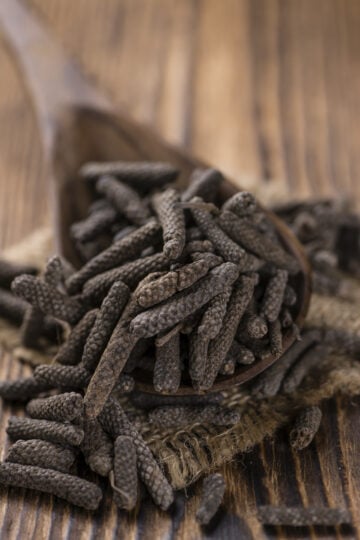
Have a question or something to share? Leave a comment below!